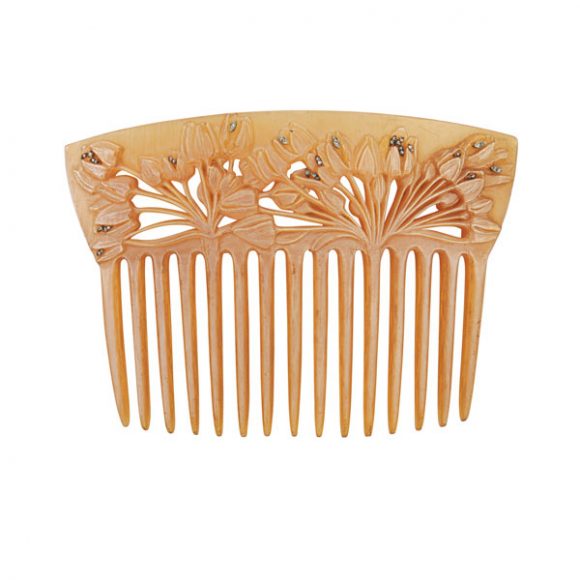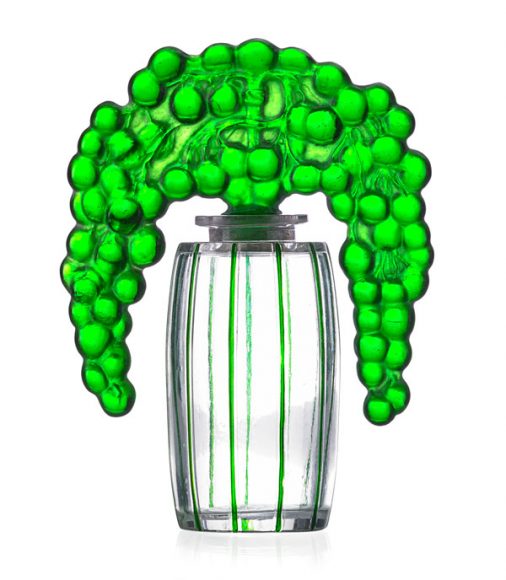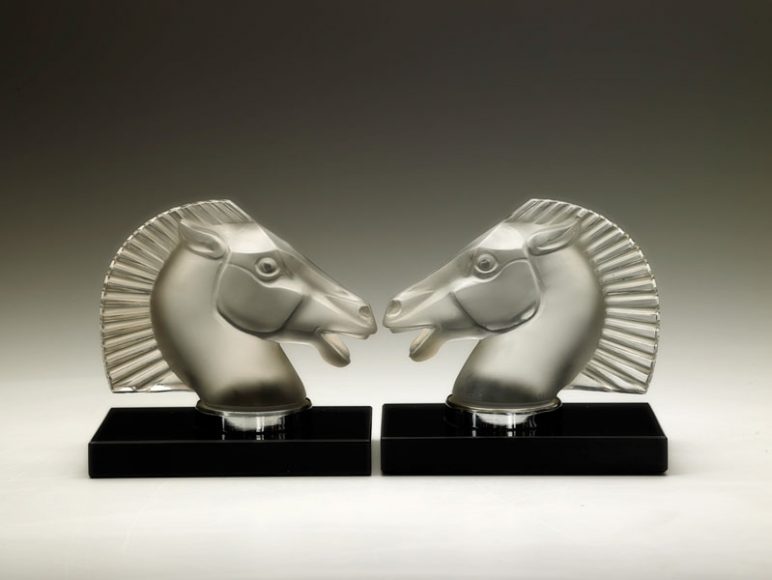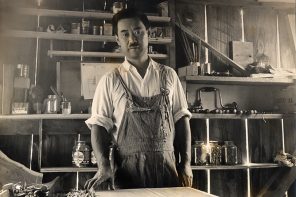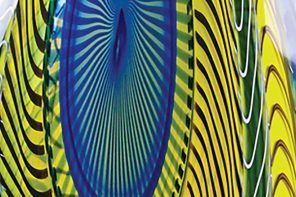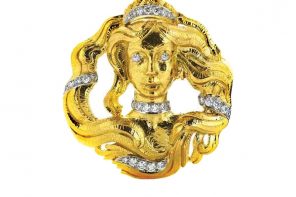Lalique is one of the most familiar names in glass and I’m almost sure to find an example or two on a client visit. But René Lalique’s glass was the focus of the second of his two highly successful careers. He was first known for his outstanding Art Nouveau jewelry designs.
Lalique (1860-1945) was born in the Marne region of France and learned the goldsmithing trade from the jeweler Louis Aucoc, supplementing this education with studies in decorative arts, graphic design and sculpture. He worked as a freelance jewelry designer, then opened his own workshop in 1886. Lalique’s jewelry drew inspiration from nature and often incorporated inexpensive materials such as horn, ivory, semiprecious stones, enamel and glass. His work was highly sought after. Lalique counted French actress Sarah Bernhardt and industrialist and art collector Calouste Gulbenkian among his most ardent patrons, and his display at the 1900 Paris International Exposition drew accolades.
Lalique’s experiments with glass in his jewelry work led him to his second career in glassmaking. One of his earliest associations was with the perfumer François Coty, for whom he began designing perfume labels and bottles in 1908. (Previously, perfume had been sold in plain flasks.) Lalique went on to manufacture hundreds of bottle designs for Coty, Worth, Roger et Gallet, among others, while also producing perfume bottles under his own name.
On a much grander scale were Lalique’s glass architectural commissions, which included his 40-foot high illuminated glass fountain, “Les Sources de France,” shown at the 1925 Paris Exposition des Arts Decoratifs and lighting and glass panels for the first-class dining room of the famed Normandie ocean liner (1935). In New York City, Lalique’s architectural work can still be seen in the floral windows of the Henri Bendel store at 714 Fifth Ave., formerly the Coty Building.
Lalique’s one-of-a-kind art glass, produced by the cire perdue method, is the most highly coveted of his glasswork. In the cire perdue (lost wax) method, a design is carved into a block of wax, which is then encased within a mold, resulting in an imprinted design. The mold is heated to melt the wax, which is then drained, leaving a cavity into which a glassblower can blow molten glass. Once cooled, the mold is broken open (and therefore destroyed) to reveal the design — in Lalique’s case, one that was defined by its matte and pitted surface with a deep definition.
In contrast to the limited production of his cire perdue work, Lalique employed industrialized production to create the quality glass that he marketed to a much wider audience. Lalique produced a multitude of items for the home, including pieces for the vanity table, desk, library and dining table.
Vases are among the most collectible Lalique forms, because they were rendered in such a great variety of designs, colors and finishes. The combination of these factors can yield great variation in value at auction. There are more than 450 designs in floral Art Nouveau, sleek Art Deco and geometric styles. Clear, colored, opalescent or cased glass (applying one layer of colored glass over another) was further enhanced with contrasting clear or frosted glass. Also, certain areas were patinated to further highlight recessed areas of the design.
Sought-after colored glass vases include “Serpent,” whose snake coils form the walls of the vessel, “Escargot” (Snail) — and “Tourbillons” (Whirlwinds), a masterpiece of Lalique’s geometric style. In clear glass, “Palestre” and “Bacchantes” (depicting Classical athletes and Bacchic maidens, respectively), “Cluny” (Classical theater masks) and “Picardie” (an abstracted floral design) are among the most highly collectible designs.
Car mascots or hood ornaments, were among Lalique’s most unusual works. They are also highly collectible, not just by Lalique collectors, but by vintage car enthusiasts. In all, 30 models were created and many of these designs doubled as paperweights or bookends. Among the most desired are “Cinq Chevaux” (Five Horses), first made for the Citroën car, “Victoire” or “Spirit of the Wind” (a figurehead with strong Art Deco lines) and “Longchamp” (a horse head in profile).
With Lalique’s extraordinarily diverse output, encompassing 1,500 models, collectors can acquire works at a wide range of price points — from modest to stratospheric. As ever, though, it is the rarity of design, coupled with outstanding condition that are the driving factors for exceptional prices at auction.
For more on Lalique, visit rlalique.com. Contact Jenny at jenny@ragoarts.com or 917-745-2730.

